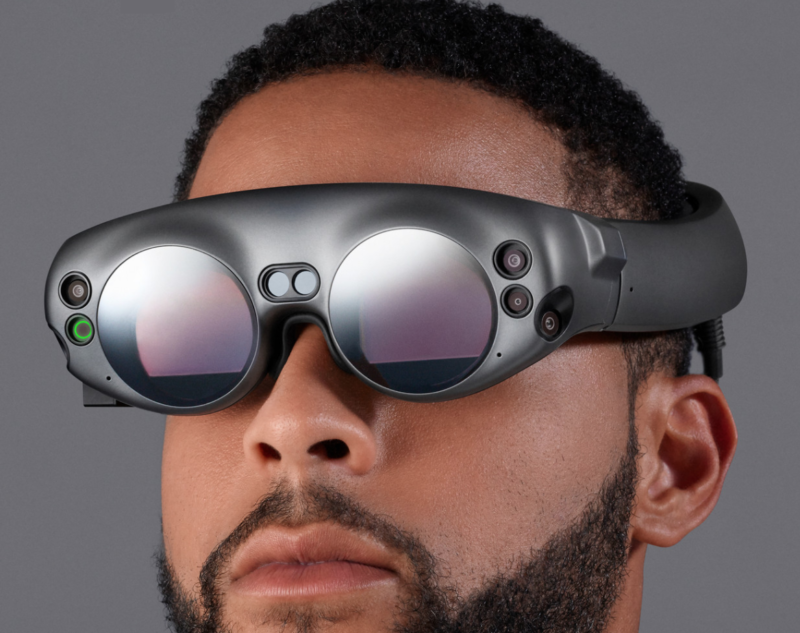
"I expect this to eventually replace smartphones," Sweeney told Ars in an interview. "Walking around in real life, instead of watching people fiddling around with the cell phone in their pocket, you'll be watching them make gestures to interact with this [augmented reality] user interface."
It won't be an instant transition, of course. Sweeney suggested we could get to 10 million early adopters for AR glasses "in the next two or three years." From there, "you take, say, 10 million users and really astonish them and give them a product that's really amazing in order to get to 100 million users. Then you have to satisfy the 100 million users to get to a billion users and so on. It's going to deploy over time."
Sweeney was extremely bullish on Magic Leap, the still-secretive AR glasses company that announced a development partnership with Unreal Engine at this year's GDC. The company's Magic Leap One glasses, which are targeting a "developer edition" release this year, are "really a magical piece of technology that is the missing link towards making that experience possible," Sweeney said.
"Magic Leap is the first product where the rubber really meets the road," he continued. "They have all the key components there. They make it all work. The challenge for subsequent generations of hardware will be miniaturizing to the point where it really is truly nothing bigger than your Oakley sunglasses, and the pixels are truly indistinguishable from reality."Sweeney predicts there will be "a few years of overlap" between AR glasses and today's virtual reality displays but that "ultimately AR is a superset of VR." While AR glasses can provide a VR-style world by blocking out your view of the real world, "VR will never be able to project the real world into your view," he said. Virtual reality will peak at a smaller audience of about 200 million people worldwide, Sweeney suggested, composed mainly of hardcore gamers and "on-site entertainment solutions" like theme parks.
Console quality on mobile
In the nearer term, Sweeney sees a complete overhaul in the level of quality Western audiences expect from mobile games in the coming year. Relatively feature-complete mobile conversions like Fortnite, PlayerUnknown's Battlegrounds, and Ark: Survival Evolved, as well as Rocket League on Nintendo Switch, have started to capture a trend toward console-quality mobile titles that has been present in Asian countries for years, he said.
"We're seeing the convergence of all these different platforms. For a decade we had indie mobile games that were really casual in design, completely separated from PC and console game design... in China and Korea already 'serious games for gamers' are the No. 1 category on mobile both by revenue and playtime. Now we're seeing these trends come here, and I think by the end of this year I expect you will see 'games for gamers' as the leading category on mobile [in the West]," he said.
The transition to high-end mobile games is partly a cultural shift in the way a new generation of players is integrating games into their lives as a "real social phenomenon," Sweeney said. But there has also been a technological shift allowing a big jump in the quality of gaming ports possible on mobile hardware recently.
"I think late last year was really the first time" many high-end console games could achieve a competent mobile port, he said. "You have awesome high-end CPUs on these devices, you have great GPUs, you have really low overhead graphics APIs, Metal on iOS, and Vulkan on Android, that make a whole new level of performance possible; it's like what DirectX did for the PC."
The transition to bigger and better mobile games will have benefits even for people not interested in tapping at tiny touch screens, Sweeney added. "A couple of months ago, when Fortnite achieved the ability to run at 60 frames per second on the PS4 and Xbox One, that actually started with the mobile optimization effort. Long before it was announced, in order to get the game running well on iOS and Android, we optimized the hell out of the graphics systems, the streaming, and the gameplay. It gave us a whole lot of benefits on console also.
"We're putting a concerted effort in both our game development and engine development efforts to having one game ship everywhere, full feature set, full interoperability networking, everything across all platforms," he added.
reader comments
131